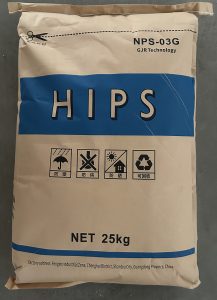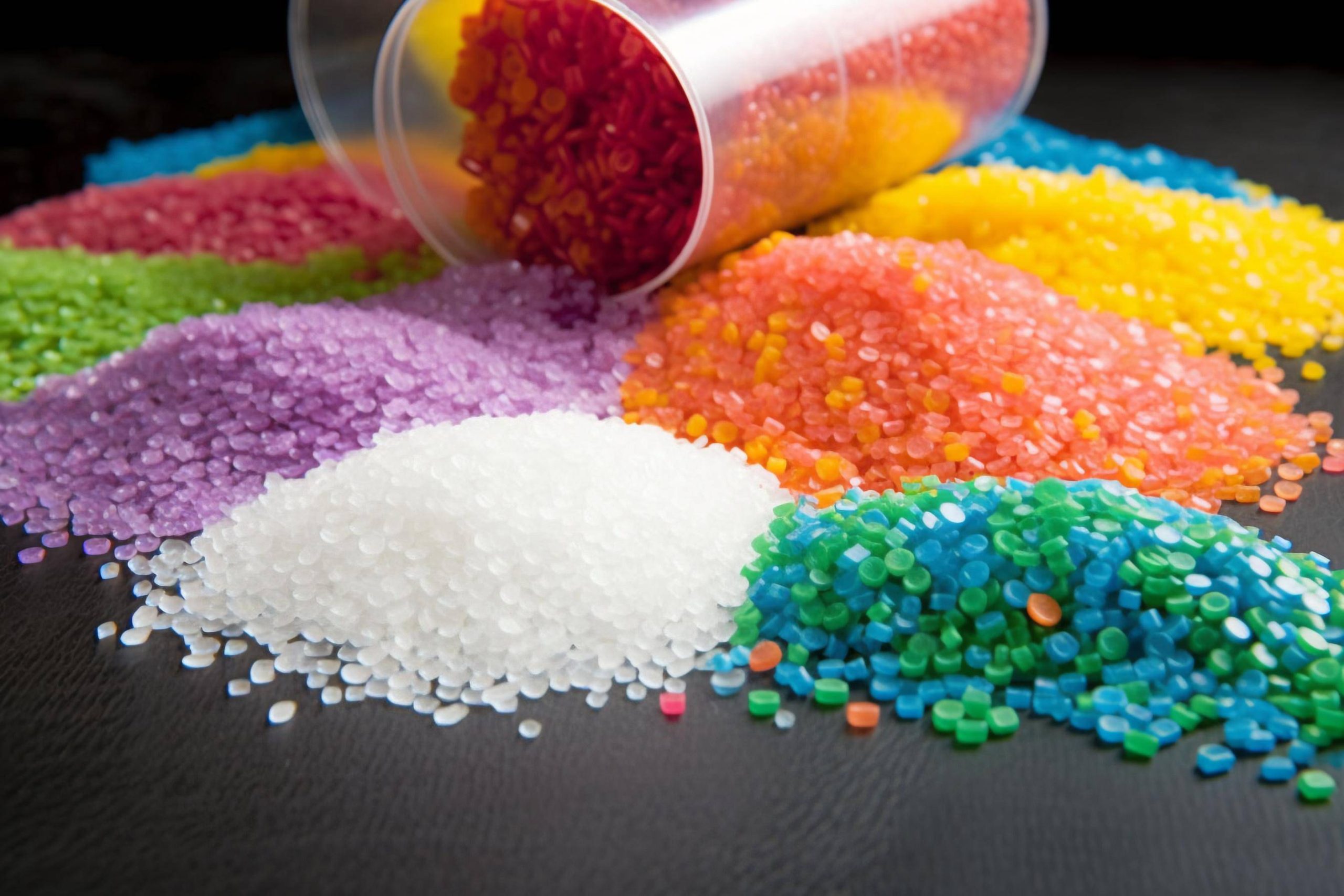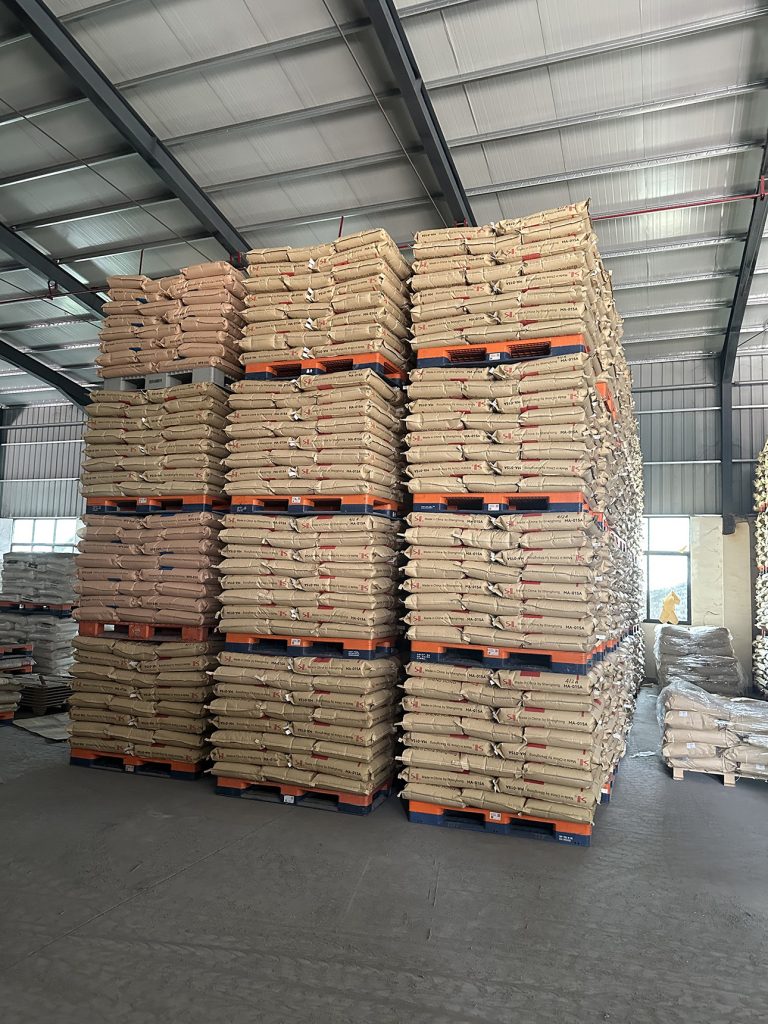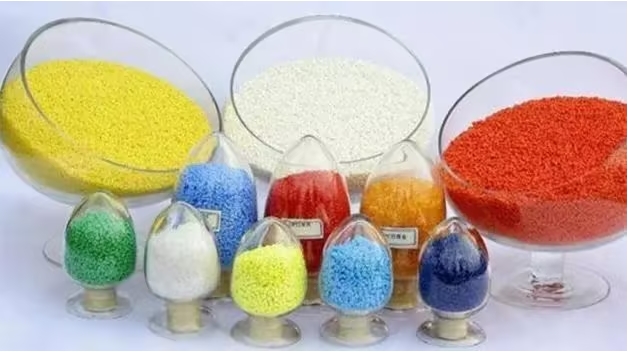What is modified plastic?
On the basis of general plastics and engineering plastics, through physical, chemical, mechanical and other processing methods such as filling, blending, and reinforcement, the properties or functions of plastics are improved or enhanced, and the mechanical properties such as flame retardancy, strength, impact resistance, and toughness of plastics are improved and enhanced, making plastics suitable for special environmental conditions such as electricity, magnetism, light, and heat.

Application scope of plastic modification technology
From the production of raw resin to the production of various specifications and varieties of modified plastic masterbatch; Applied to almost all raw materials and molding processes of plastic products.
The application range of plastic modification is very wide, and almost all plastic properties can be improved through modification methods. Such as the appearance, transparency, density, precision, processability, mechanical properties, chemical properties, electromagnetic properties, corrosion resistance, aging resistance, wear resistance, hardness, thermal properties, flame retardancy, barrier properties, etc. of plastic. In order to reduce the cost, improve performance, and enhance functionality of plastic products, plastic modification technology is indispensable.
Plastic modification methods
Physical modification: In principle, no chemical reaction occurs, mainly through physical mixing processes. Chemical reactions often occur during the physical modification process.
Chemical modification: block copolymerization, graft copolymerization, crosslinking and degradation reactions are carried out on polymer molecular chains through chemical methods, or new functional groups are introduced to form polymer materials with specific functions.
Main modification techniques for plastics
1. Fill in
By adding inorganic mineral (organic) powder to ordinary plastics, the rigidity, hardness, heat resistance and other properties of plastic materials can be improved. There are various types of fillers, and their characteristics are also extremely complex.
The function of filler for plastics is to improve plastic processing performance, enhance physicochemical properties, increase volume, and reduce costs.
Characteristics that plastic incremental fillers should possess:
(1) Chemically inactive, inert, and not prone to adverse reactions with resins and other additives;
(2) Does not affect the water resistance, chemical resistance, weather resistance, heat resistance, etc. of plastics;
(3) Not reducing the physical properties of plastics;
(4) Can be filled in large quantities;
(5) The relative density is small and has little effect on the density of the product;
(6) The price is relatively low.
2. Enhance
1) Measure: By adding fibrous substances such as glass fiber and carbon fiber.
2) Effect: It can significantly improve the rigidity, strength, hardness, and heat resistance of materials,
3) Adverse effects: However, many materials can lead to surface defects and significantly reduced toughness.
4) Enhancement principle:
Reinforced materials have high strength and modulus;
Resin has many inherent excellent physical, chemical (corrosion resistance, insulation, radiation resistance, instantaneous high-temperature ablation resistance, etc.) and processing properties;
After the composite of resin and reinforcement material, the reinforcement material can enhance the mechanical or other properties of the resin, and the resin can play a role in bonding and transferring loads to the reinforcement material, making the reinforced plastic have excellent properties.
3. Toughening
Many materials have insufficient toughness and are too brittle. Adding materials with good toughness or ultrafine inorganic materials can increase material toughness and low-temperature performance.
Toughening agent: an additive added to resins to reduce the brittleness of hardened plastics and improve their impact strength and elongation.
Common toughening agents:
Mostly maleic anhydride graft compatibilizers——
Ethylene vinyl acetate copolymer (EVA)
Chlorinated polyethylene (CPE)
Acrylonitrile butadiene styrene copolymer (ABS)
Styrene butadiene thermoplastic elastomer (SBS)
Ethylene propylene diene monomer (EPDM) rubber
All of them are toughening agents that have significant effects on plastics, especially engineering plastics.
4. Flame retardant
In many occasions, materials are required to have flame retardancy, which is commonly used in electronic appliances and the automotive industry, but generally lower. Flame retardancy can be achieved by adding flame retardants.
Most plastics are flammable. With the widespread application of plastics in construction, furniture, transportation, aviation, aerospace, electrical appliances, etc., improving the flame retardancy of plastics has become an urgent issue.
Flame retardant: also known as flame retardant, fire-resistant agent or fireproof agent, a functional additive that endows flammable polymers with flame retardancy; They are mostly compounds of the elements in groups V A (phosphorus), VII A (bromine, chlorine), and III A (antimony, aluminum) of the periodic table.
Molybdenum compounds, tin compounds, and iron compounds with smoke suppression properties also belong to the category of flame retardants, mainly suitable for plastics with flame retardant requirements, to delay or prevent the combustion of plastics, especially polymer plastics.
Prolong its ignition time, ignite and self extinguish, making it difficult to ignite.
Flame retardant principle
1) Endothermic effect
The amount of heat released by any combustion in a short period of time is limited. If a portion of the heat released by the fire source can be absorbed in a short period of time, the flame temperature will decrease, and the heat radiated to the combustion surface and acting on the decomposition of already vaporized combustible molecules into free radicals will be reduced. The combustion reaction will be suppressed to a certain extent.
Under high temperature conditions, flame retardants undergo strong endothermic reactions, absorbing some of the heat released during combustion, reducing the surface temperature of combustibles, effectively suppressing the generation of combustible gases, and preventing the spread of combustion. The flame retardant mechanism of Al (OH) 3 flame retardant is to increase the specific heat capacity of the polymer, so that it absorbs more heat before reaching the thermal decomposition temperature, thereby improving its flame retardant performance. This type of flame retardant fully utilizes its ability to absorb a large amount of heat when combined with water vapor, improving its own flame retardant capability.
2) Coverage effect
When flame retardant is added to combustible materials, the flame retardant can form a glassy or stable foam covering layer under high temperature, isolate oxygen, and have the functions of heat insulation, oxygen isolation, and preventing combustible gas from escaping outward, so as to achieve flame retardancy.
Organic phosphorus resistant flame retardants can produce cross-linked solid substances or carbonized layers with more stable structures when heated. The formation of the carbonization layer can prevent the polymer from further pyrolysis on one hand, and on the other hand, it can prevent the internal thermal decomposition products from entering the gas phase to participate in the combustion process.
3) Inhibition chain reaction
According to the chain reaction theory of combustion, free radicals are required to maintain combustion. Flame retardants can act on the gas-phase combustion zone, capturing free radicals in the combustion reaction, thereby preventing the spread of flames, reducing the flame density in the combustion zone, and ultimately slowing down the combustion reaction rate until it is terminated.
If the flame retardant contains halogen, its evaporation temperature is the same or similar to the polymer decomposition temperature. When the polymer decomposes under heat, the flame retardant also evaporates simultaneously. At this time, the halogen containing flame retardant and the thermal decomposition products are simultaneously in the gas-phase combustion zone, and the halogen can capture the free radicals in the combustion reaction, thereby preventing the spread of flames and reducing the flame density in the combustion zone, ultimately reducing the combustion reaction rate until it is terminated.
4) Non combustible gas suffocation effect
Flame retardants decompose into non combustible gases when heated, diluting the concentration of combustible gases produced by the decomposition of combustibles to below the lower limit of combustion. At the same time, it also has a diluting effect on the oxygen concentration in the combustion zone, preventing the continuation of combustion and achieving flame retardancy.
Plastic flame retardant grade
UL94 flammability rating – is the most widely used combustible performance standard for plastic materials. It is used to evaluate the ability of materials to extinguish after being ignited. There are multiple evaluation methods based on combustion speed, combustion time, anti droplet ability, and whether droplets burn.
Plastic flame retardant grade: gradually increasing from HB, V-2, V-1, V-0, 5VB to 5VA.
HB: The lowest flame retardant rating in UL94 standard.
V-2, V-1, V-0, 5VB, 5VA flame retardant standards
5. Cold resistant (weather resistant)
Generally refers to the cold resistance of plastics at low temperatures. Due to the inherent low-temperature brittleness of plastics, they become brittle at low temperatures, so plastic parts like those in cars generally require cold resistance.
Weather resistance: refers to a series of aging phenomena that occur in plastic products due to external conditions such as sunlight exposure, temperature changes, wind and rain exposure, such as fading, discoloration, cracking, powdering, and decreased strength.
Ultraviolet radiation is a key factor in promoting plastic aging.
Various weather resistance testing methods have been developed for different materials and usage scenarios, such as various aging tests, simulating natural climate conditions, and conducting experiments.
Coating weather resistance test, also known as atmospheric exposure test, assesses the durability of the coating itself to the atmosphere.
The weather resistance of leather can be measured in a weather resistance test chamber (or aging chamber, accelerated weather tester) that simulates natural climate.
6. Plastic alloy
Plastic alloy is a new material that uses physical blending, chemical grafting, and copolymerization to prepare two or more materials into high-performance, functional, and specialized materials, achieving the goal of improving the performance of one material or combining the characteristics of two materials.
Plastic alloys are widely used in fields such as automobiles, electronics, precision instruments, office equipment, packaging materials, and building materials.
It can improve or enhance the performance of existing plastics and reduce costs.
Universal plastic alloys, such as PVC (polyvinyl chloride), PE (polyethylene), PP (polypropylene), PS (polystyrene) alloys, are widely used and their production technology is widely mastered.
Engineering plastic alloy: refers to the blend of engineering plastics (resins), mainly including blend systems with PC, PBT, PA, POM (polyoxymethylene), PPO, PTFE (polytetrafluoroethylene) and other engineering plastics as the main body, as well as ABS resin modified materials.
The production of PC/ABS alloy is growing at a rate of about 10% annually, ranking among the top in the plastic industry in terms of growth rate. At present, research on PC/ABS alloying has become a hot topic in polymer alloy research.
Main subcategories of modified plastics
1. Flame retardant resins
Flame retardant plastic products can greatly reduce the risk of fire when short circuits, overloads, water immersion, and other situations occur.
2. Reinforced and toughened resins
Mainly divided into weather resistant and toughened PP special materials, fiberglass reinforced thermoplastic and other products.
1) Weather resistant toughened PP special material: Weather resistant toughened PP special material is a new polypropylene material with engineering plastic characteristics, which has the advantages of good low-temperature toughness, low molding shrinkage rate, high rigidity, and strong weather resistance. It is mainly used in outdoor environments that require weather resistance and ultraviolet radiation. Its main consumer groups include home appliance companies, automotive parts companies, etc.
2) Fiberglass reinforced thermoplastic products: The products mainly include fiberglass reinforced AS/ABS, fiberglass reinforced PP, fiberglass reinforced nylon, fiberglass reinforced PBT/PET, fiberglass reinforced PC, fiberglass reinforced PPE/PPS, etc. Its main consumer groups include computer accessory companies, mechanical parts companies, power tool companies, lighting companies, etc.
3. Plastic alloys
It is mainly divided into PC alloy, PVC alloy, and polyester alloy.
Characteristics of PC alloy products: high impact strength, creep resistance, heat resistance, low water absorption, non-toxic, excellent dielectric properties, etc.
PC alloy applications: automotive instrument panels, computer and office automation equipment, power tool housings, cellular phones, etc.
PVC/ABS alloy: produced by adding various modifiers such as toughening agents, lubricants, stabilizers, and flame retardants to PVC and ABS substrates.
Performance advantages: Excellent mechanical properties, weather resistance, processing rheological properties, good surface gloss of products, good injection molding and extrusion effects, making it an extremely cost-effective alloy material.
Application scope: It can replace flame-retardant and weather resistant ABS, PC, etc., and is used in household appliance casings, electrical switches, meter casings, lighting materials, communication networks, building materials, and other fields.
Polyester alloy: It has excellent mechanical properties (fatigue resistance), dimensional stability, chemical resistance, and the ability to withstand environmental stress cracking,
Application scope: automotive, home appliances, power tools and other fields.
4. Functional colorants
Mainly refers to high impact polystyrene toughened flame retardant masterbatch.
The characteristics of functional colorants – they can reduce production costs and improve product quality.
1) Meet the flame retardant requirements of UL94, IEC-65, GB8898 and other standards for electrical and electronic products;
2) Improve the toughness, processing flowability, and demolding properties of HIPS resin;
3) Give HIPS resin color.
Development prospects of modified plastics – three major changes
1. Engineering plasticization of general plastics
Despite the continuous increase in new varieties of engineering plastics and the exploration of application fields, and the gradual reduction in costs due to the expansion of production equipment. However, with the continuous development and maturity of modification equipment and technology, general-purpose thermoplastic resins have become increasingly engineered through modification, and have already seized some of the application markets of traditional engineering plastics.
2. High performance of engineering plastics
With the vigorous development of the domestic automotive, electrical, electronic, communication, and mechanical industries, the demand for modified engineering plastics will significantly increase, and various high-strength and heat-resistant engineering plastics will be widely used.
3. Low cost of special engineering plastics
High performance engineering plastics such as polyphenylene sulfide (PPS), polyimide (PIM), polyetheretherketone (PEEK), polysulfone (PSF), and liquid crystal polymer (LCP) have increasingly important applications in cutting-edge technology fields such as electronics, automotive, instrumentation, home appliances, aviation, coatings, petrochemicals, rockets, aerospace, etc. due to their excellent electrical properties, high temperature resistance, and dimensional stability. Some also have good flame retardancy, radiation resistance, chemical resistance, and mechanical properties.



